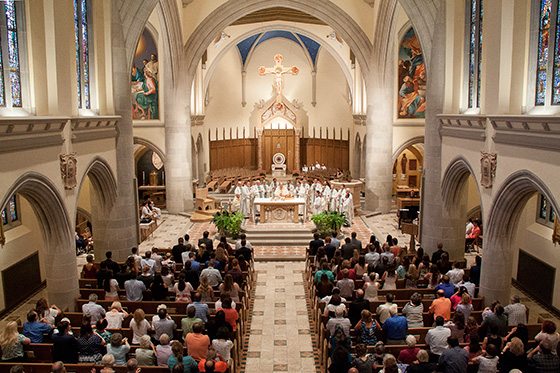When there is talk about launching an increased offertory effort, who leads the discussion? The source can greatly influence the case, implementation, and results.
Frequently, the Finance Council leads this discussion. Here’s a possible scenario: After working with the business manager and pastor to review upcoming expenses and income, there is a shortfall to a balanced budget. The Finance Council has helped control all the expenses possible, but even still, financial demands are higher than anticipated offertory.
To secure additional revenue, the idea of an increased offertory program is suggested. The narrative that is then articulated focuses on what it would take to get the parish to a balanced budget. Language that is used might involve messages like, “If you give three dollars per week, could you do five dollars?” Or, “If you give twenty dollars a week, can you give twenty-five?”
Once the budget shortfall is covered, victory is declared and the effort closes down until the next budget shortfall. The entire engagement through this effort is a financial transaction attached to the donor’s wallet. It assumes that when the parish gets back to net-zero dollars, then every need that the parish desires to respond to will then be met.
In a growing number of instances, it is a Stewardship Committee that establishes a path to fully engage every parishioner to be of their best service to the mission of the Church. This process of prayer, almsgiving, and service invites people to participate in all aspects of Church life. This path asks everyone to look at their personal balance sheet — and not just their bank account balance, but rather the skills they have and the time they can make available to serve the ministries of the Church.
No longer is the message about a balanced budget. It’s about what we can do to serve the many missions of the Church — together.
Increased offertory programs as part of a stewardship approach take longer to plan, but the good news is that, in turn, the corresponding results last longer.
This approach requires:
+ The parish to assess its needs and opportunities for involvement. How can people be invited to use their time and talent, in addition to treasure?
+ Screening to assess financial opportunities for involvement.
+ A Stewardship Committee that must be deliberately curated and extensively trained.
+ A commitment to making this approach part of the operating culture of the parish.
An approach focused on a full and comprehensive stewardship effort yields dramatic results. These include significant increases in Mass attendance, additional volunteers across all ministries, and jumps in financial support.
On average, the contributions at a parish that fully practices stewardship are 19% higher than those that don’t. In addition to becoming a stakeholder in the delivery of your mission, a stewardship-focused approach means that your donors will carefully consider their offertory in a light that allows them to participate in a planned and measured way.
In many instances, when people make an annual decision about how much they will give (as, for example, a percentage of income or annual dollar amount), contributions increase two-fold or more versus when a decision is made as the offertory basket passes by each week.
Fully implementing a stewardship effort isn’t always easy or quickly done. It must become a culture within the Church. And it requires a willingness to commit to welcoming input and involvement at all levels of the Church.


